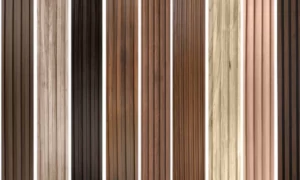Lights, camera, texture! In the world of 3D animation, these two elements play a crucial role in bringing digital creations to life. From setting the mood to enhancing realism, lighting and texturing can make or break a project. Join us as we dive into why mastering these aspects is essential for creating stunning visuals in 3D animation.
Introduction to lighting and texturing in 3D animation
3D animation has revolutionized the way we can bring art and storytelling to life. Through realistic and immersive visuals, audiences are transported into imaginative worlds where anything is possible. But behind every stunning 3D animation lies a crucial element that often goes unnoticed – lighting and texturing.
Lighting and texturing play a vital role in creating an engaging and believable 3D animation. They are the key components that breathe life into computer-generated images, making them appear more realistic, vibrant, and visually appealing.
Firstly, let’s understand what lighting and texturing mean in the world of 3D animation.
Lighting refers to the placement, intensity, color, and direction of light sources within a scene. It creates highlights and shadows that give depth, dimension, and mood to an image. Without proper lighting techniques, even the most meticulously designed models may appear flat or unrealistic.
On the other hand, texturing involves adding surface details to objects by applying materials such as colors, patterns, or images. Textures help enhance the visual quality of an object by giving it a realistic appearance. For example, without textures on an apple model in an animation scene may look flat like plain vector graphics instead of appearing as a real-life fruit with its unique skin texture.
The role of lighting in setting the mood and atmosphere
Lighting and texturing are essential elements in creating a captivating and realistic 3D animation. They can greatly influence the mood and atmosphere of a scene by manipulating the way we perceive objects, spaces, and characters.
In the world of 3D animation, lighting is not just about illuminating a scene. It serves as a powerful tool that enhances the overall aesthetic and emotional impact of the animation. Different types of lighting techniques such as three-point lighting, natural lighting, and moody lighting can be used to create different moods and atmospheres.
Firstly, let us explore how lighting can affect emotions in an animation. Bright and evenly distributed light often creates an upbeat or cheerful atmosphere. This type of lighting is commonly seen in children’s animations or comedy films where the intent is to make the audience feel happy and positive. On the other hand, low-key or dimly lit scenes with deep shadows tend to evoke feelings of mystery or suspense. These are often used in horror or thriller movies to heighten tension and fear.
Moreover, colors also play a crucial role in setting mood through lighting in 3D animations. Warm colors like reds, oranges, yellows are associated with warmth, energy, passion whereas cool colors like blues, greens give off a calm and serene vibe. By using color gels on lights or adjusting the temperature of light sources digitally, animators can effectively convey specific emotions or tones.
Aside from evoking emotions, proper use of lighting also helps create believable environments for our animated characters to live in. For instance, adding soft ambient light coming through windows gives depth to indoor scenes while using moonlight for outdoor shots creates an ethereal nighttime atmosphere.
Understanding different types of lighting techniques in 3D animation
Lighting is a crucial aspect of 3D animation that brings life to the virtual world. It helps create depth, mood, and atmosphere in a scene, and plays a vital role in conveying the story and emotion to the audience. As such, understanding different types of lighting techniques in 3D animation is essential for any animator or artist looking to make their work stand out.
The first type of lighting technique commonly used in 3D animation is known as “ambient lighting”. This refers to the overall illumination present in a scene without any direct light sources. Ambient lighting creates a balanced base level of light that ensures all objects are visible and prevents them from appearing too dark or shadowed.
Another commonly used technique is “direct lighting”, which involves using strong, directional lights to illuminate specific elements or areas within the scene. This type of lighting can help create dramatic effects and add depth to an otherwise flat-looking scene by casting shadows and highlighting certain features.
“Indirect lighting” refers to light that bounces off other surfaces in the scene, creating soft and diffused illumination. This technique is often used to provide more natural-looking light sources, such as sunlight streaming through a window or moonlight reflecting off water.
In addition to these three primary techniques, there are various other methods utilized by animators depending on their desired effect. One notable example is “three-point lighting”, where three distinct light sources – key, fill, and backlights – are placed around an object or character to achieve a well-lit and visually appealing result.
Another advanced technique that has gained popularity in recent years is called “global illumination”. Unlike traditional methods where lights need to be manually placed in a scene, global illumination calculates how indirect light behaves realistically based on its environment. It results in highly realistic looking scenes with accurate reflections, colors, and shadows.
Importance of proper texturing for realistic visuals
Texture plays a crucial role in creating realistic and visually appealing animations. It is a key element that brings life to the objects and characters in a 3D animated scene. Without proper texturing, even the most detailed and precise models can fall flat. In this section, we will discuss why texturing is essential for achieving realistic visuals in 3D animation.
One of the primary reasons for using textures in animation is to add depth and detail to the surface of an object or character. Textures provide information about the material, such as its roughness, smoothness, shine, or opacity. These details can make all the difference in making an object look real rather than it appearing like a computer-generated image.
For example, imagine a scene where there are two identical wooden chairs placed side by side. One chair has no texture applied to it, while the other one has carefully crafted wood textures with grain details. The latter will undoubtedly look more realistic and believable than the former.
Furthermore, textures help us create a sense of realism by adding imperfections that exist in the real world. As humans, we are trained to detect these subtle imperfections because they are present in our everyday surroundings. For instance, if you observe your desk closely, you will notice small scratches and dents on its surface due to daily use. These tiny details might seem insignificant but add immense value when trying to create a believable environment.
Not only do textures enhance visual appeal, but they also save time and effort during animation production. By applying pre-made textures onto objects instead of manually painting every detail ourselves allows us to focus on other aspects such as movement and storytelling.
Techniques for creating lifelike textures
When it comes to creating visually stunning 3D animations, lighting and texturing are two crucial elements that can make or break the lifelike quality of a scene. While lighting sets the mood and atmosphere of a scene, texturing adds depth and realism to objects and characters. In this section, we will explore some techniques for creating lifelike textures in your 3D animations.
1. Utilize High-Quality Textures:
The first step to achieving realistic textures is using high-quality images as textures for your models. This means ensuring that the images you use have enough resolution and detail to be applied onto your 3D objects without appearing blurry or pixelated. You can either create your own custom high-resolution textures or purchase them from online marketplaces.
2. Use Displacement Maps:
Displacement maps are grayscale texture images that control the displacement of vertices in a model’s surface, giving the illusion of depth and volume. By applying these maps onto models, you can add fine details such as wrinkles on skin or bumps on an object’s surface, making it appear more realistic.
3. Experiment with Different Shading Techniques:
Shading plays a vital role in creating lifelike textures in 3D animations. A simple solid color material can look flat and uninteresting; therefore, experimenting with various shading techniques such as bump mapping, specular mapping, reflection mapping, etc., can add complexity and realism to your textures.
4. Pay Attention to Lighting:
Lighting plays an essential role in showcasing texture details accurately. Properly placed light sources can bring out fine details in a material’s texture by creating highlights and shadows that add depth to the surface. Adjusting light intensity, color temperature, and direction can drastically affect how materials appear on screen.
5. Use Layered Textures:
Layered texturing involves combining multiple images together to create a complex texture that mimics real-world materials’ intricate appearance. This technique works particularly well when creating organic textures such as skin, fur, or wood. By layering and blending different textures together, you can create a unique and lifelike texture that adds realism to your 3D models.
6. Don’t Overlook UV Mapping:
UV mapping is the process of flattening out a 3D model’s surface into a 2D representation for applying textures accurately. Neglecting proper UV mapping can result in distorted or stretched textures, which can ruin the overall appearance of your models. Take your time with this step and ensure that the UV layout is neat and organized before applying any textures.
Case studies of popular animated films and their use of lighting and texturing
Lighting and texturing are crucial elements in creating a visually appealing 3D animated film. They play a significant role in immersing the audience into the world of the film and bringing the characters to life. In this section, we will take a closer look at some popular animated films and analyze how they have effectively used lighting and texturing to enhance their storytelling.
1. Frozen (2013)
Disney’s blockbuster hit, Frozen, is a perfect example of how lighting and texturing can create an immersive cinematic experience. The film follows two princesses, Elsa and Anna, whose kingdom is trapped in an eternal winter due to Elsa’s magical powers. From the opening scene where we see young Elsa playing with her snow creations, it is evident that lighting plays a vital role in setting the mood for the film. The use of warm natural light when Anna is interacting with Elsa creates a contrast to the cool blue tones used when Elsa’s powers are present.
Another important aspect of Frozen’s visual appeal is its intricate texturing of snow and ice. The team behind the film spent months researching different types of ice formations to accurately portray them in their scenes. This attention to detail can be seen throughout the film, from the sparkling icicles on buildings to intricate snowflakes falling from the sky.
2. Toy Story (1995)
Toy Story was not only Pixar’s first feature-length animated film but also one of the pioneers in computer-generated animation. Despite being over 25 years old, Toy Story still holds up as an excellent example of how lighting and texturing can elevate storytelling in animation.
The character design for Woody and Buzz Lightyear may seem simplistic compared to modern animations; however, it was their detailed textures that brought them to life on screen. From Woody’s cowboy hat made out of felt fabric to Buzz’s shiny plastic suit, every element was carefully textured to make them believable as toys.
In terms of lighting, Toy Story utilized a mix of natural and artificial light sources to create depth and evoke emotions in the audience. The iconic scene where Buzz first discovers he is a toy is an excellent example of this. The light from the open window creates a warm and inviting atmosphere, but as he realizes his true identity, the lighting changes to dark blues and purples, highlighting his despair.
Tips for beginners on how to improve their lighting and texturing skills
Lighting and texturing are two essential elements that can make or break the quality of an animation. They not only add realism and depth to your work, but they also help in conveying the mood and emotions of a scene. As a beginner in the world of 3D animation, it is crucial to understand how lighting and texturing can enhance your creations.
Here are some tips for beginners on how to improve their lighting and texturing skills:
1. Study real-life references
One of the best ways to improve your lighting and texturing skills is by studying real-life references. Observe how light falls on different objects in different environments, notice the colors, shadows, and highlights. This will help you understand how to recreate these effects in your animation.
2. Understand light types
Before diving into lighting techniques, it is important to have a good understanding of various light types such as ambient, directional, point, spotlights, etc. Each light type has its own purpose and knowing when to use them will greatly improve the overall look of your animation.
3. Use appropriate color schemes
Color plays a significant role in setting up the mood of a scene. Be mindful while choosing color schemes for your textures as they should reflect the emotions you want to convey through your animation. For example, warm colors like reds and oranges evoke feelings of warmth and excitement whereas cool colors like blues create a sense of calmness.
4.Vary texture resolutions
When it comes to textures, using high-resolution images may seem tempting but it can also slow down your render times significantly. Instead, opt for varying texture resolutions depending on their size in the frame or their importance in the scene.
5.Play with shadows
Shadows can add depth and drama to an otherwise flat-looking animation. Experiment with different shadow intensities depending on the direction of light source or object placement.
6.Add details through bump mapping
Bump mapping is a technique used to create the illusion of surface detail. It can greatly enhance the realism of your textures without adding any extra polygonal details. Use bump maps to add subtle imperfections and details like wrinkles, scratches, etc.
7.Properly set up materials
Materials are an integral part of texturing in 3D animation. Take the time to properly assign materials to your objects and adjust their properties such as reflectivity, roughness, transparency, etc. This will make a huge difference in the final look of your animation.
Future advancements in lighting and texturing technology for
As technology continues to evolve at a rapid pace, the world of animation is not far behind. In recent years, we have witnessed major improvements in lighting and texturing techniques that have transformed how 3D animated films are created. However, with new advancements emerging every day, it is crucial for animators to keep up with the latest trends and tools in order to deliver visually stunning and realistic animations.
One of the most significant developments in lighting technology for 3D animation is real-time rendering. Traditionally, animators had to wait hours or even days for a single frame of animation to render due to complex calculations involved in creating shadows and reflections. With the introduction of real-time rendering engines such as Unreal Engine and Unity, this process has been drastically reduced, allowing animators more time to focus on other aspects of their projects.
Another promising advancement is the use of physically-based rendering (PBR). This technique uses complex algorithms that mimic how light behaves in the real world, resulting in more realistic and accurate lighting effects. PBR also allows for improved control over materials such as metal, glass, or skin by accurately simulating their properties under different lighting conditions.
In terms of texturing technology, subsurface scattering (SSS) has been a game-changer. SSS mimics how light penetrates through translucent objects like skin or wax, giving them a more lifelike appearance. Prior to its development, these types of materials were hard to replicate realistically.
Another exciting development is machine learning-based texturing methods which are being used by major animation studios such as Pixar and DreamWorks Animation. This technology utilizes advanced algorithms that can analyze vast amounts of texture data from existing images and generate high-quality textures automatically without manual input or painting skills required from artists.
With the rise of virtual reality (VR) technology, there has also been an increased focus on creating more immersive and realistic experiences through lighting and texturing in 3D animation. The use of VR headsets allows the viewer to explore and interact with the animated world in a way that was not possible before, emphasizing the importance of creating visually stunning environments.
Conclusion
In conclusion, lighting and texturing play a crucial role in creating impactful and realistic 3D animations. The right combination of lighting techniques can bring a scene to life by setting the mood, enhancing the details, and directing the audience’s attention. Similarly, well-executed texturing can give depth and dimension to characters or objects, making them seem more lifelike. Therefore, it is vital for animators to have a strong understanding of these elements and how they work together to create visually stunning animations. With continued advancements in technology and software tools, we can expect even more impressive results from 3D animation in the future.



































